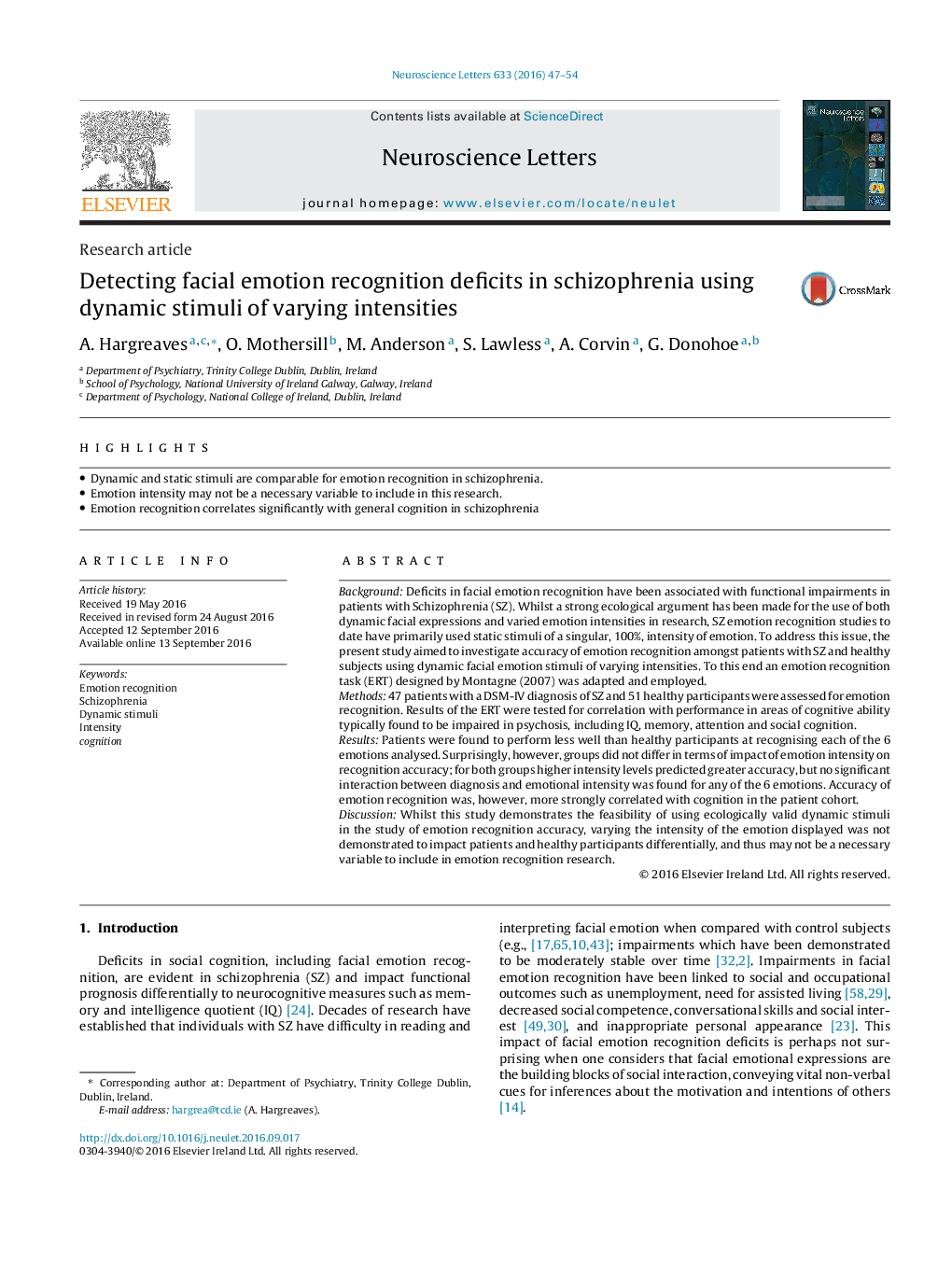| کد مقاله | کد نشریه | سال انتشار | مقاله انگلیسی | نسخه تمام متن |
|---|---|---|---|---|
| 6278997 | 1615066 | 2016 | 8 صفحه PDF | دانلود رایگان |
- Dynamic and static stimuli are comparable for emotion recognition in schizophrenia.
- Emotion intensity may not be a necessary variable to include in this research.
- Emotion recognition correlates significantly with general cognition in schizophrenia
BackgroundDeficits in facial emotion recognition have been associated with functional impairments in patients with Schizophrenia (SZ). Whilst a strong ecological argument has been made for the use of both dynamic facial expressions and varied emotion intensities in research, SZ emotion recognition studies to date have primarily used static stimuli of a singular, 100%, intensity of emotion. To address this issue, the present study aimed to investigate accuracy of emotion recognition amongst patients with SZ and healthy subjects using dynamic facial emotion stimuli of varying intensities. To this end an emotion recognition task (ERT) designed by Montagne (2007) was adapted and employed.Methods47 patients with a DSM-IV diagnosis of SZ and 51 healthy participants were assessed for emotion recognition. Results of the ERT were tested for correlation with performance in areas of cognitive ability typically found to be impaired in psychosis, including IQ, memory, attention and social cognition.ResultsPatients were found to perform less well than healthy participants at recognising each of the 6 emotions analysed. Surprisingly, however, groups did not differ in terms of impact of emotion intensity on recognition accuracy; for both groups higher intensity levels predicted greater accuracy, but no significant interaction between diagnosis and emotional intensity was found for any of the 6 emotions. Accuracy of emotion recognition was, however, more strongly correlated with cognition in the patient cohort.DiscussionWhilst this study demonstrates the feasibility of using ecologically valid dynamic stimuli in the study of emotion recognition accuracy, varying the intensity of the emotion displayed was not demonstrated to impact patients and healthy participants differentially, and thus may not be a necessary variable to include in emotion recognition research.
Journal: Neuroscience Letters - Volume 633, 28 October 2016, Pages 47-54
